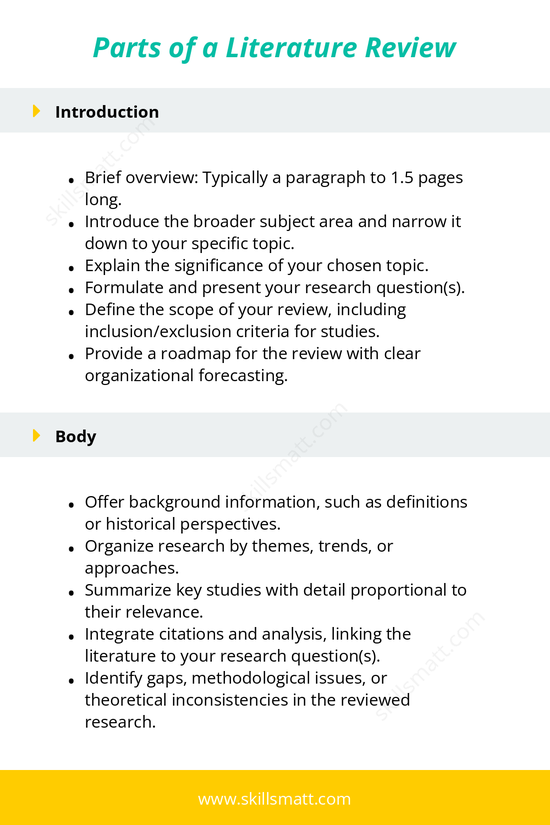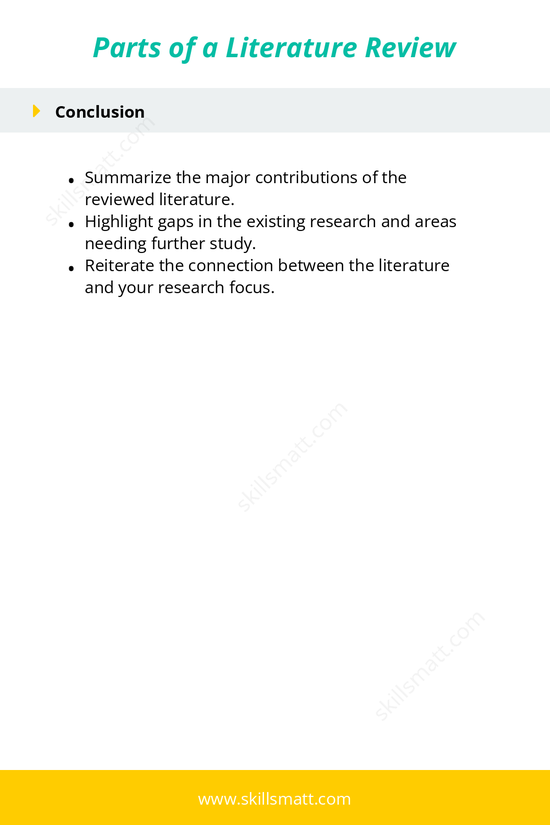Parts of a Literature Review
A literature review is composed of several essential sections, each serving a distinct purpose. Here’s a breakdown:
Introduction
- Brief overview: Typically a paragraph to 1.5 pages long.
- Introduce the broader subject area and narrow it down to your specific topic.
- Explain the significance of your chosen topic.
- Formulate and present your research question(s).
- Define the scope of your review, including inclusion/exclusion criteria for studies.
- Provide a roadmap for the review with clear organizational forecasting.
Body
- Offer background information, such as definitions or historical perspectives.
- Organize research by themes, trends, or approaches.
- Summarize key studies with detail proportional to their relevance.
- Integrate citations and analysis, linking the literature to your research question(s).
- Identify gaps, methodological issues, or theoretical inconsistencies in the reviewed research.
Conclusion
- Summarize the major contributions of the reviewed literature.
- Highlight gaps in the existing research and areas needing further study.
- Reiterate the connection between the literature and your research focus.


